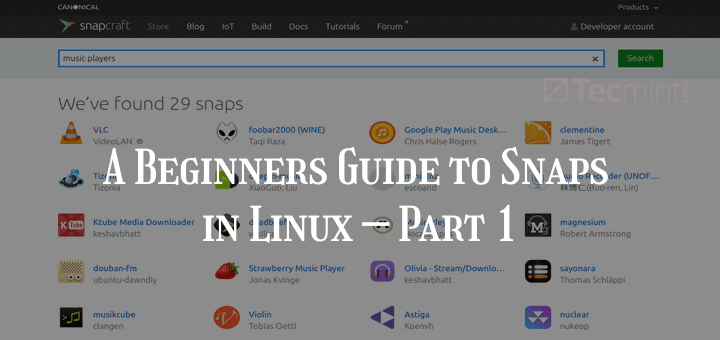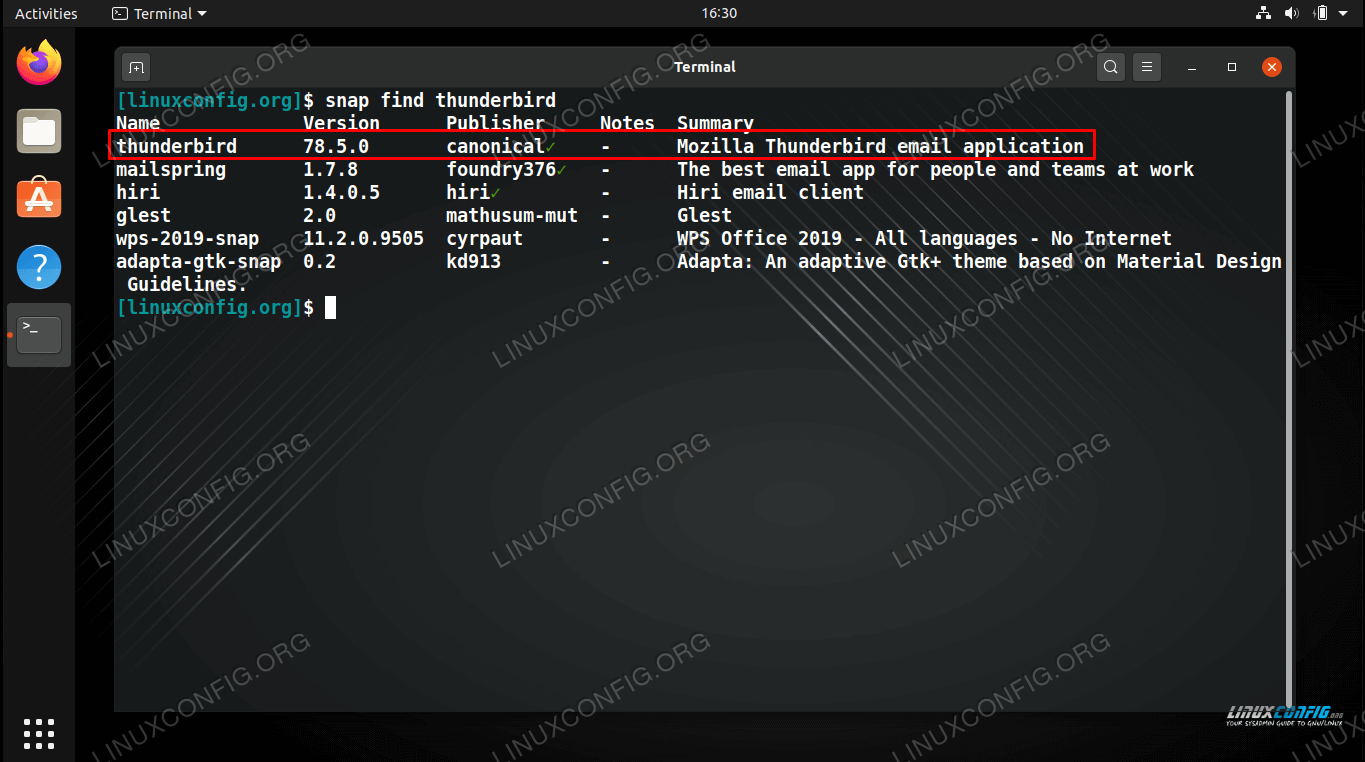

- #SNAP PACKAGE MANAGER CENTOS HOW TO#
- #SNAP PACKAGE MANAGER CENTOS INSTALL#
- #SNAP PACKAGE MANAGER CENTOS UPDATE#
- #SNAP PACKAGE MANAGER CENTOS SOFTWARE#
- #SNAP PACKAGE MANAGER CENTOS DOWNLOAD#
#SNAP PACKAGE MANAGER CENTOS SOFTWARE#
In most cases, deleting software from the local package manager will also erase its dependencies (unless other programs require them).
#SNAP PACKAGE MANAGER CENTOS DOWNLOAD#
When installing software, it will automatically download and store the required dependencies. Package dependencies are binaries, libraries, and modules on which software rely on.
#SNAP PACKAGE MANAGER CENTOS HOW TO#
How to Remove Packages with Dependencies Using Yum
#SNAP PACKAGE MANAGER CENTOS INSTALL#
The install hook is the place for one-timeĪctions, such as an early initialisation of a resource when installed for the first time.Note: Only root users and users added to the sudousers group have permission to install and remove packages in CentOS. The hook is executed before starting snap services (if it has any) and before the configure hook. The install hook is called upon initial install only, i.e. One of the hooks that is supported by snap is called install hook.

The idea behind the creation of the package is the same, when creating a snap package you can specify hooks.Ī hook is an executable file that runs within a snap’s confined environment when a certain action occurs. Creating a malicious snap package ⌗Ĭreation of a malicious snap package can be achieved in 2 ways, using the fpm command which we’ve already used and using snapcraft. The low privileged user has theĪbility to run snap with sudo permissions.

Let’s create a configurationįile called custom_yum.conf with the below contents.Īs snap works on all major distros, I’ll be showcasing this on our ubuntu server. Since as a low privileged user we cannot write the default plugin directories, we need to use aĬonfiguration file that specifies directories we have permission to write.įortunately, yum allows us to specify a configuration file via the commandline via the -c option. We can confirm this by seeing the fastestmirror plugin file and configuration. We see that plugins are currently enabled, but there’s not entry for the other options meaning the default options apply. Using this information we can look at yum.conf on our centos server. Default is /usr/share/yum-plugins and /usr/lib/yum-plugins.Ī list of directories where yum should look for plugin configuration files. See the PLUGINS section of the yum(8) man for more information on installing yum plugins.Ī list of directories where yum should look for plugin modules. Global switch to enable or disable yum plugins. The minimal content for such a configuration file is:įrom yum.conf man page, there are several plugin configurations that can be set:Įither 0 or 1. etc/yum/pluginconf.d/.conf and the enabled setting in this file A configuration file for the plugin must exist in The global plugins option in /etc/yum.conf must be set to '1'.ģ. The plugin module file must be installed in the plugin path as just described.Ģ.
#SNAP PACKAGE MANAGER CENTOS UPDATE#
Yum always informs you which plugins, if any, are loaded and active whenever you call any yum command.Īs shown below, when we run the yum update command we can see the loaded plugin.Ī plugin is a Python “.py” file which is installed in one of the directories specified by the pluginpath option in yum.conf.įor a plugin to work, the following conditions must be met: 1. Certain plugins are installed by default. Yum provides plugins that extend and enhance its operations. We have successfully gained a root shell. To start off we’ll create a directory called exploit then create a shell script that runs whoami command and put in the folder. The low privileged user can create a debian package that contains commands to escalate the privileges. Method 1: Creating a malicious debian package ⌗ Here I have an ubuntu server, the user has the permission to run apt with sudo. In this tutorial we’re taking the position of a low privileged user that only has permission to run one of theĪbove package managers as sudo. Therefore,įor our case it works on both debian and redhat based distros. There’s another package manager called snap that supports all major linux distros. Is a GUI application that supports similar features to the command line ones. Linux Privilege Escalation: Package Managers Scenario Package Managers ⌗įor debian based linux distributions we have several package managers:įrom the list APT (Advanced Packaging Tool) is the most common one that is used. If you would like to test out these commands in a lab environment without the need to install and setup your own machine have a look We’ll look at how this permission can be abused to gain root access to the machine via a root shell. Has been assigned sudo permissions to run the package manager only for package management

In certain cases the user should not be a root/admin user but Package managers are run with root permissions on linux distributions to install,


 0 kommentar(er)
0 kommentar(er)
